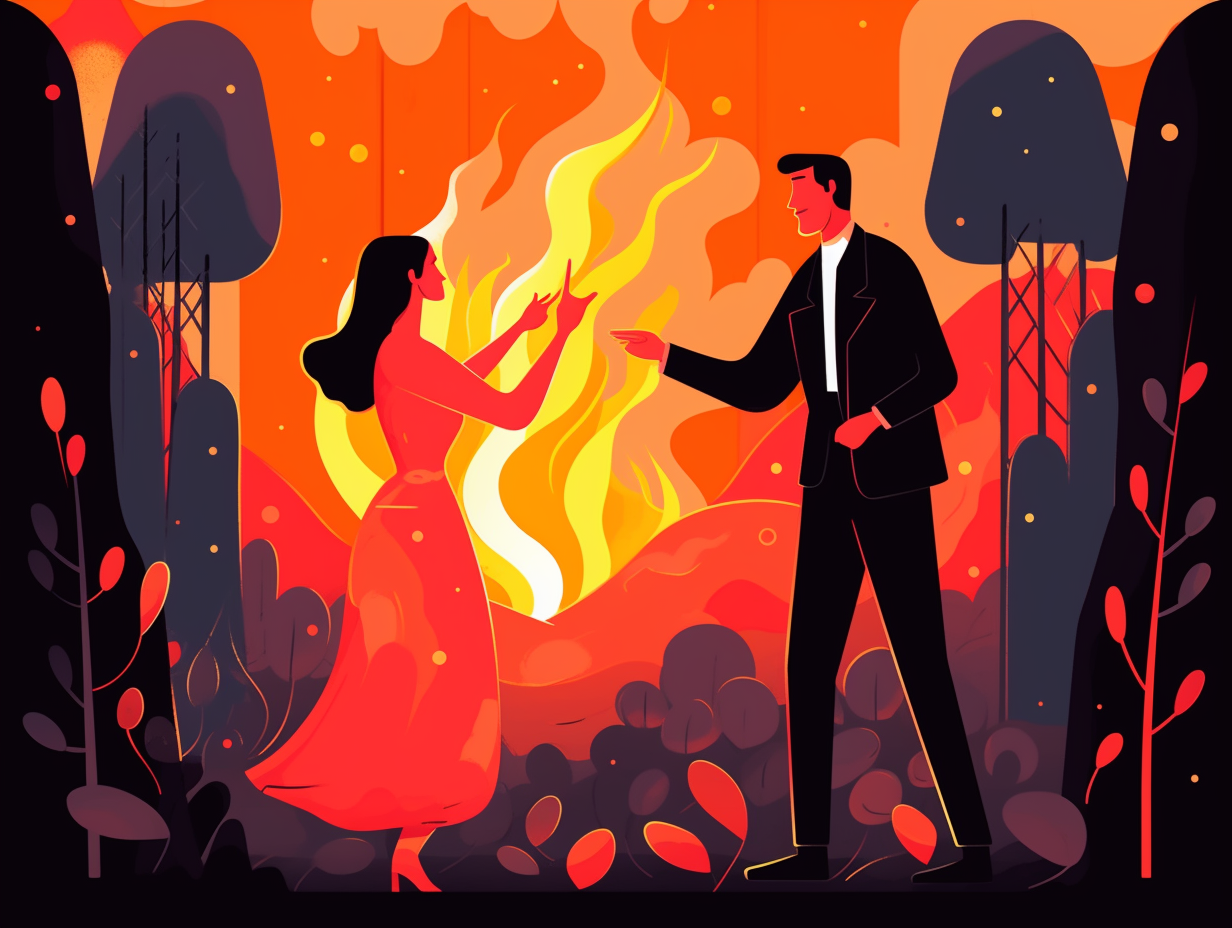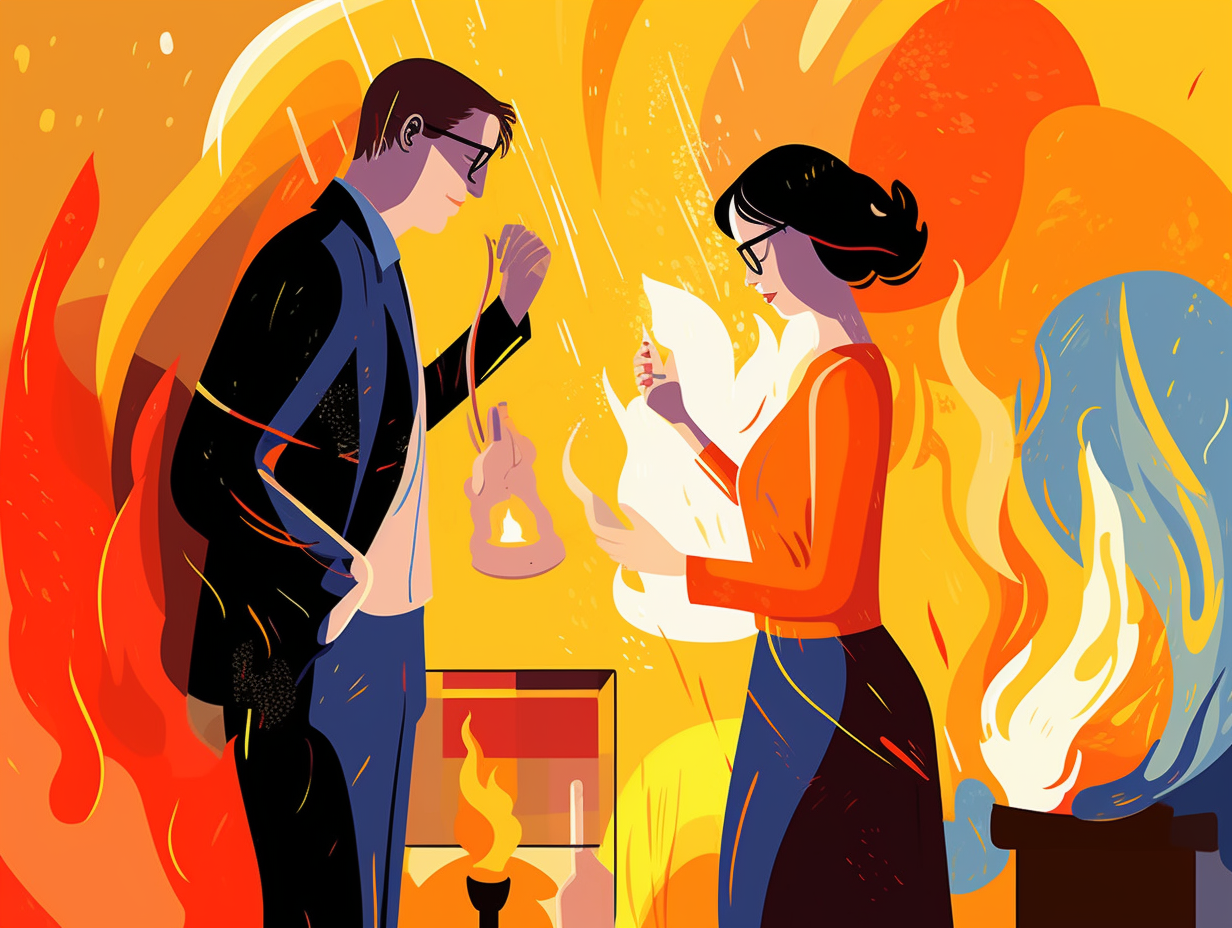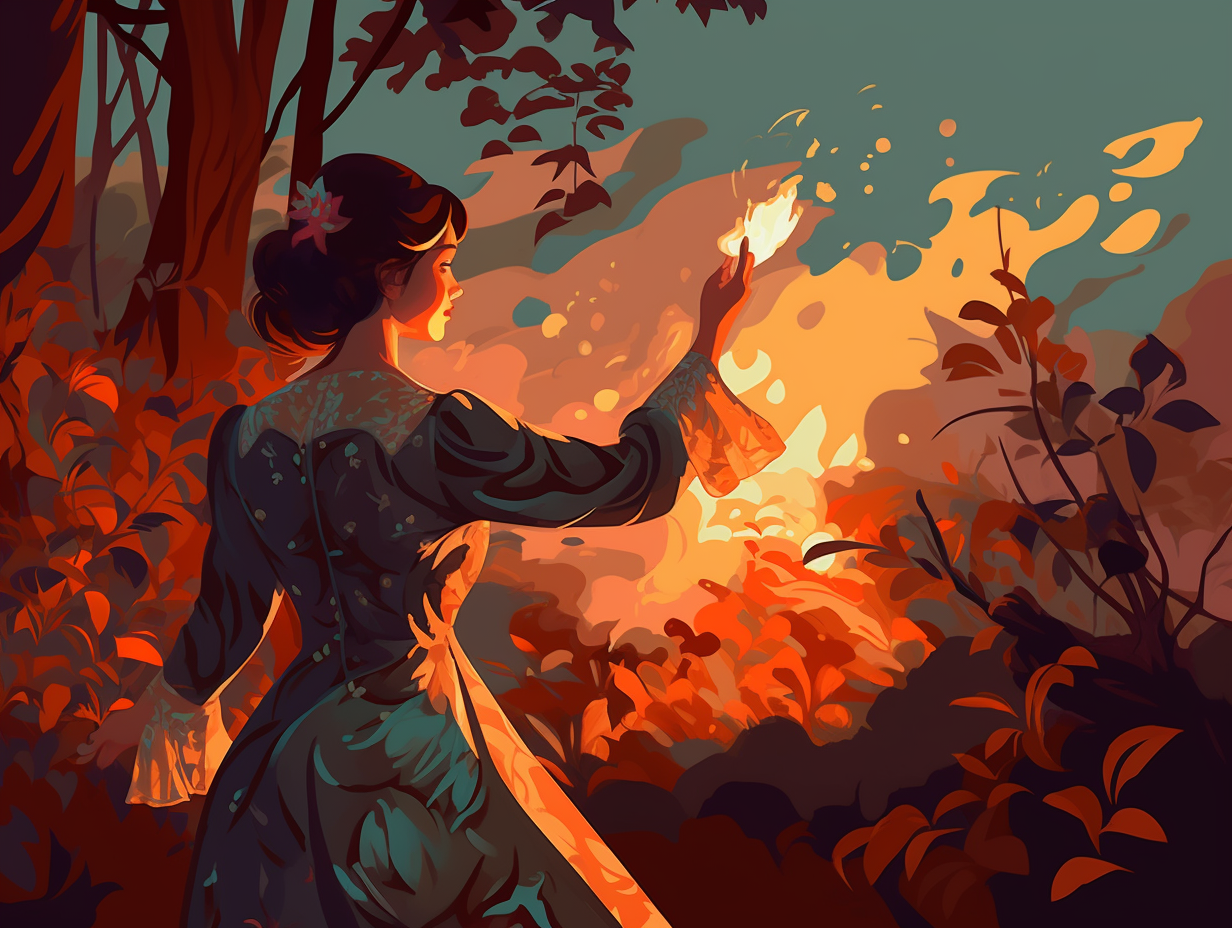11 Sizzling Fun Facts About Fire You Never Knew: Discover the Science and History Behind Flames!

1. Plant Pyromaniacs
Talk about a hot mess: some plants, like the lodgepole pine, Eucalyptus, and Banksia, can only unleash their little seedlings when their cones or fruits' resin is melted by wildfires – an adaptation that makes them the ultimate pyromaniacs of the plant world.
Source => britannica.com
2. Fire Tornado Tango
Hold onto your fire extinguishers, because this wildfire party just got lit: fire whirls don't always turn into fire tornadoes, but when they do, like in the 2018 Carr Fire, they can boast winds of up to 143 mph, as they tango with a vortex column of hot air, gases, smoke, debris, and flames!
Source => loc.gov

Did you know the sun is a fusion foodie, devouring deuterium-tritium to create warmth and energy? Discover how this cosmic cookery could revolutionize Earth's power plants! 🌞💥
=> Fun Facts about Combustion
3. Backdraft's Explosive Personality
If you thought explosive family reunions were chaotic, imagine a combustible grand entrance by a backdraft: Sudden and raging, it occurs during fires when there's little-to-no ventilation leading to superheated gases that can burst into an explosion if oxygen is reintroduced. Firefighters are trained to handle these hot-headed intruders—detecting warning signs like yellow or brown smoke, puffs of smoke escaping small holes, and windows blackened with soot—always keeping their cool when faced with such explosive personalities.
Source => en.wikipedia.org
4. Beetle's DIY Flamethrower
Talk about fighting fire with fire: the Bombardier beetle combats its enemies with a DIY flamethrower! Armed and dangerous, this little critter whips up a spicy concoction from two separate chemicals in its glands, mixing them into a scalding-hot, pungent spray that even its most fearsome foes can't stomach. But despite the blistering bombshells it dishes out, the beetle remains unscathed, all thanks to a unique chemical reaction within its tiny body of horrors.
Source => studysmarter.us

5. Prometheus: The Fire Thief
In a fiery game of "yoink!", ancient Greece's wiliest thief swiped some heavenly heat and sparked the ultimate man-made miracle: Prometheus, that cheeky titan, didn't merely provide humans with fire but also survived his infamous liver-picking punishment to become a symbol of human striving and a reminder of the risks of unintended consequences in our quest for scientific knowledge.
Source => en.wikipedia.org
6. Friction Fire: Swipe Right for Heat
Before humans could just "swipe right" on a dating app, they had to swipe right on a hand drill to get some heat: Creating fire through friction, like using a hand drill or fire bow, was one of the earliest techniques humans developed to produce fire, long before the convenience of matches and lighters graced our fingertips.
Source => greenbelly.co
7. Lightning's Art Project: Fulgurites
When the sky goes electric, you better bolt to safety, but not before checking out nature's wildly Lichtenbergian art project: Fulgurites are hollow glass tubes created when lightning strikes soil, sand, or rock, melting and fusing the material into intricate root-like formations that vary in size but are always strikingly unique!
Source => geology.utah.gov
8. West African Fire Multitasking
When West Africans aren't playing with fire, they're putting it to good use: Fire is an essential tool for various sociocultural activities, such as land preparation, weed control, postharvest stubble burning, bush clearing, firebreaks, charcoal burning, and hunting, showcasing its versatility in supporting rural livelihoods and socio-economic goings-on.
Source => journals.plos.org
9. Fire Eater's Extinguishing Tricks
Did you hear about the fire-eating artist who got steaming drunk and cooled off using their fiery breath? Well, don't try this at home, folks: Fire eaters actually extinguish flames inside their mouths or on touched surfaces not by using alcohol-laced saliva, but by cutting off the oxygen supply, cooling the area with water evaporation, or blowing on the flame, all thanks to the principle that heat takes time to transfer and rises in the air.
Source => en.wikipedia.org

10. St. Elmo's Nautical Light Show
Who turned on the blacklight at this nautical rave? Behold, St. Elmo's fire: a vibrant blue or violet luminescent plasma show generated during high-voltage events like thunderstorms or volcanic eruptions, forming around pointy objects such as ship masts and spires. Named after St. Elmo, patron saint of sailors, this buzzing wonder of nature has been marveled at with equal parts fascination and fear by seafarers through the ages.
Source => en.wikipedia.org
11. The Matchstick Revolution
When John Walker "accidentally" rubbed two sticks together, it ignited much more than just a spark of inspiration: In 1827, the tenacious English chemist developed the world's first friction matches after years of experimenting with various chemicals and coatings, ultimately finding success with a concoction of potassium chloride and antimony sulfide. Though he never patented his ingenious "Friction Lights," his meticulous research set the world ablaze, in a good way, as it revolutionized our access to fire for generations to come.
Source => britannica.com
Related Fun Facts




















